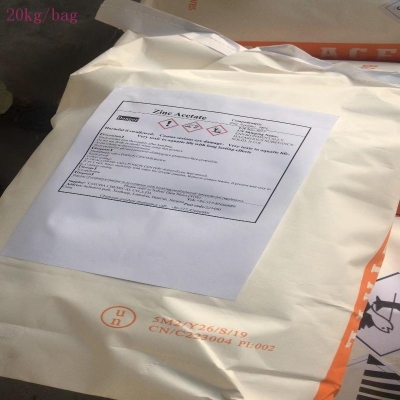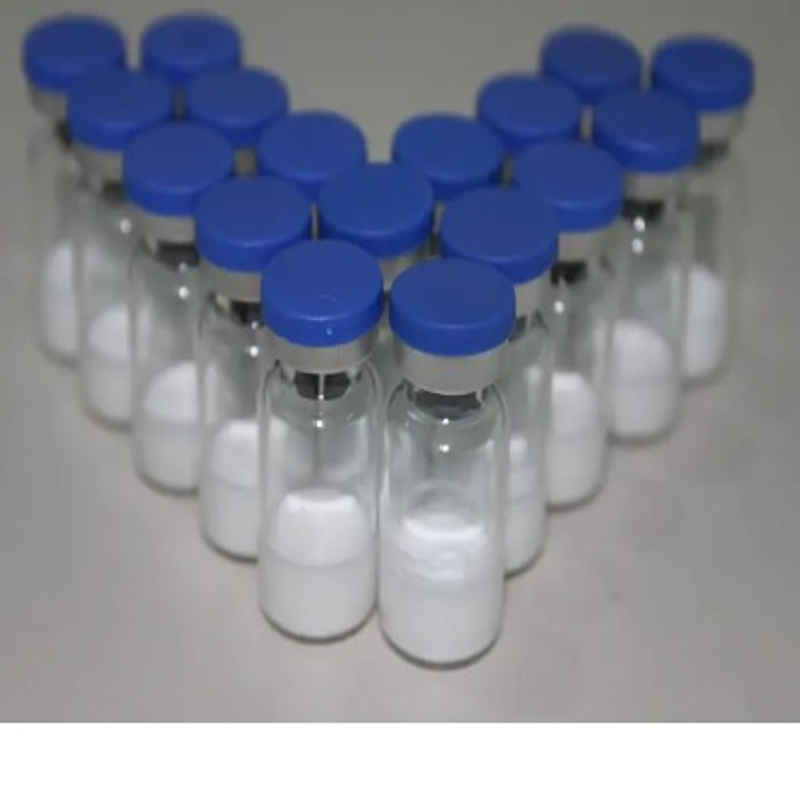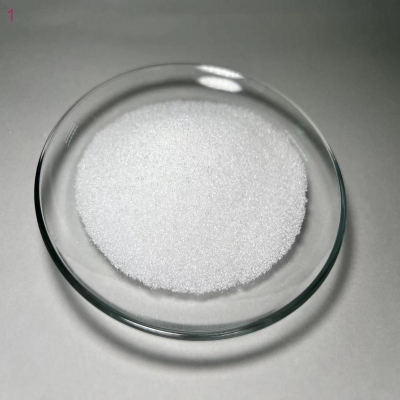-
Categories
-
Pharmaceutical Intermediates
-
Active Pharmaceutical Ingredients
-
Food Additives
- Industrial Coatings
- Agrochemicals
- Dyes and Pigments
- Surfactant
- Flavors and Fragrances
- Chemical Reagents
- Catalyst and Auxiliary
- Natural Products
- Inorganic Chemistry
-
Organic Chemistry
-
Biochemical Engineering
- Analytical Chemistry
-
Cosmetic Ingredient
- Water Treatment Chemical
-
Pharmaceutical Intermediates
Promotion
ECHEMI Mall
Wholesale
Weekly Price
Exhibition
News
-
Trade Service
"In the future, China's urea will reduce costs and increase the utilization rate of raw materials; domestic demand for phosphate fertilizer will remain stable, and there will be a slight increase in the international market; domestic potash fertilizer prices will rise steadily
.
" These are reporters from Argus FMB Asia Fertilizer on April 14.
News from the meeting
.
From April 13th to 15th, the Argus FMB Asia Fertilizer Conference was held in Beijing.
Nearly 500 representatives from more than 50 countries around the world attended the conference.
Our reporter listened to the analysis of the global fertilizer market by experts from various countries
.
"In the past, the nitrogen fertilizer market tended to be in the off-season and the peak season.
In the future, the off-peak season of China's nitrogen fertilizer market will become more and more obvious
.
" said Gao Li, deputy secretary general of the China Nitrogen Fertilizer Industry Association
.
"At present, international urea exports from China to India and the Middle East to the United States are the main trade flows.
The EU's urea demand is mainly based on intra-regional trade.
With the commissioning of new projects, Africa will become a urea export region
.
With the large particles With the expansion of urea production capacity and the improvement of quality, China’s exports to Brazil are expected to increase
.
” Jiang Hanhui, an industry analyst at the Food and Agricultural Research Department of the Shanghai Branch of Rabobank Co.
, Ltd.
, analyzed: “China’s new urea production capacity this year is mostly concentrated in the central and western rich coal.
In regions, the installations are also developing to large-scale.
Newly-built installations mostly use advanced coal gasification technology, use non-high-quality anthracite, pulverized coal and other coals to reduce costs, and the utilization rate of raw materials has been greatly increased, and the production energy consumption has been significantly reduced
.
It is expected that by 2020, approximately 25% of the high-cost production capacity will be replaced by low-cost production capacity
.
” Wang Ying, secretary general of the New Fertilizer Branch of the China Phosphate and Compound Fertilizer Industry Association, pointed out: “Under the policy of zero growth of chemical fertilizers, the domestic demand for phosphate fertilizers will remain stable in the future, and there will be a slight increase in the international market.
Rise
.
" Alice Charlton, senior analyst at Argus FMB, analyzed that the decline in phosphate fertilizers that began in 2015 will continue through the third quarter of this year, and China’s phosphate fertilizer exports will continue to increase this year.
The decline in oil prices has stimulated the fertilizer market.
It is expected that the global demand for phosphate fertilizer will further increase in 2016, and more units with a capacity of one million tons will be launched one after another in the future.
.
“In the future, the price of potash fertilizer will rise steadily, because commodity prices have begun to rebound recently.
Although potash prices have not risen yet, market supply and demand have undergone subtle changes
.
” said Qi Zhaoying, a potash industry expert, that the production capacity of domestic potash fertilizers in 2016 It will rise back to about 13.
5 million tons (equivalent to potassium chloride), and the output is expected to remain at the level of 9.
5-10 million tons
.
"In 2015, potash fertilizer imports hit a record high.
China needs about 9% of the world's arable land to feed more than 20% of the world's population.
The demand for chemical fertilizers is still very large
.
It is estimated that Brazil will import 8.
5 million tons of potash fertilizer this year
.
In addition, cocoa beans, one of the main crops in Africa, are also potassium-needing crops
.
Therefore, we speculate that the global demand for potassium fertilizer will continue to increase in the future
.
" said Matt Albrecht, senior vice president, marketing, Canadian Potash Corporation
.
.
" These are reporters from Argus FMB Asia Fertilizer on April 14.
News from the meeting
.
From April 13th to 15th, the Argus FMB Asia Fertilizer Conference was held in Beijing.
Nearly 500 representatives from more than 50 countries around the world attended the conference.
Our reporter listened to the analysis of the global fertilizer market by experts from various countries
.
"In the past, the nitrogen fertilizer market tended to be in the off-season and the peak season.
In the future, the off-peak season of China's nitrogen fertilizer market will become more and more obvious
.
" said Gao Li, deputy secretary general of the China Nitrogen Fertilizer Industry Association
.
"At present, international urea exports from China to India and the Middle East to the United States are the main trade flows.
The EU's urea demand is mainly based on intra-regional trade.
With the commissioning of new projects, Africa will become a urea export region
.
With the large particles With the expansion of urea production capacity and the improvement of quality, China’s exports to Brazil are expected to increase
.
” Jiang Hanhui, an industry analyst at the Food and Agricultural Research Department of the Shanghai Branch of Rabobank Co.
, Ltd.
, analyzed: “China’s new urea production capacity this year is mostly concentrated in the central and western rich coal.
In regions, the installations are also developing to large-scale.
Newly-built installations mostly use advanced coal gasification technology, use non-high-quality anthracite, pulverized coal and other coals to reduce costs, and the utilization rate of raw materials has been greatly increased, and the production energy consumption has been significantly reduced
.
It is expected that by 2020, approximately 25% of the high-cost production capacity will be replaced by low-cost production capacity
.
” Wang Ying, secretary general of the New Fertilizer Branch of the China Phosphate and Compound Fertilizer Industry Association, pointed out: “Under the policy of zero growth of chemical fertilizers, the domestic demand for phosphate fertilizers will remain stable in the future, and there will be a slight increase in the international market.
Rise
.
" Alice Charlton, senior analyst at Argus FMB, analyzed that the decline in phosphate fertilizers that began in 2015 will continue through the third quarter of this year, and China’s phosphate fertilizer exports will continue to increase this year.
The decline in oil prices has stimulated the fertilizer market.
It is expected that the global demand for phosphate fertilizer will further increase in 2016, and more units with a capacity of one million tons will be launched one after another in the future.
.
“In the future, the price of potash fertilizer will rise steadily, because commodity prices have begun to rebound recently.
Although potash prices have not risen yet, market supply and demand have undergone subtle changes
.
” said Qi Zhaoying, a potash industry expert, that the production capacity of domestic potash fertilizers in 2016 It will rise back to about 13.
5 million tons (equivalent to potassium chloride), and the output is expected to remain at the level of 9.
5-10 million tons
.
"In 2015, potash fertilizer imports hit a record high.
China needs about 9% of the world's arable land to feed more than 20% of the world's population.
The demand for chemical fertilizers is still very large
.
It is estimated that Brazil will import 8.
5 million tons of potash fertilizer this year
.
In addition, cocoa beans, one of the main crops in Africa, are also potassium-needing crops
.
Therefore, we speculate that the global demand for potassium fertilizer will continue to increase in the future
.
" said Matt Albrecht, senior vice president, marketing, Canadian Potash Corporation
.







